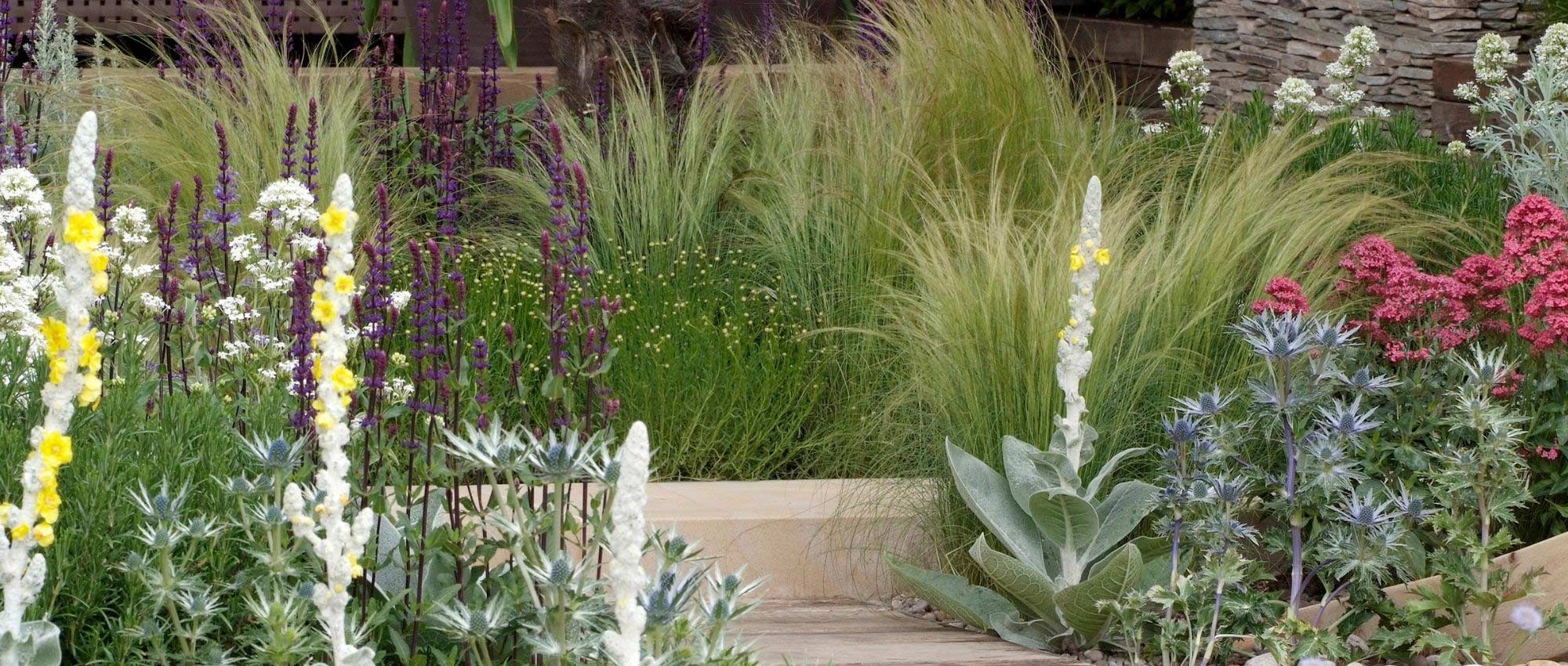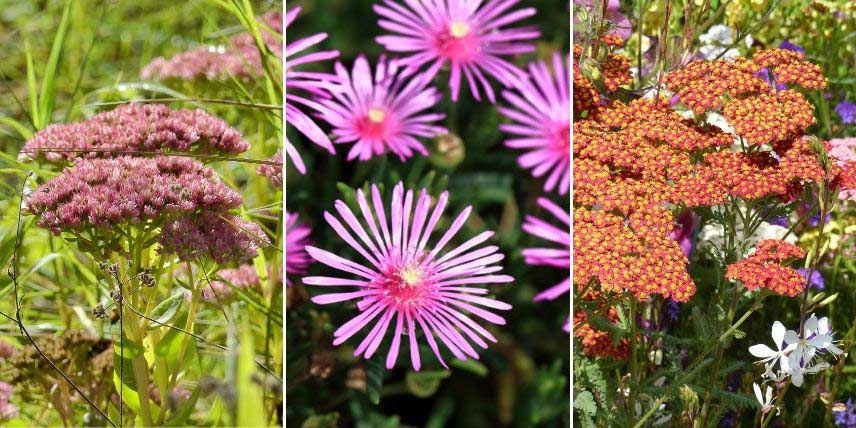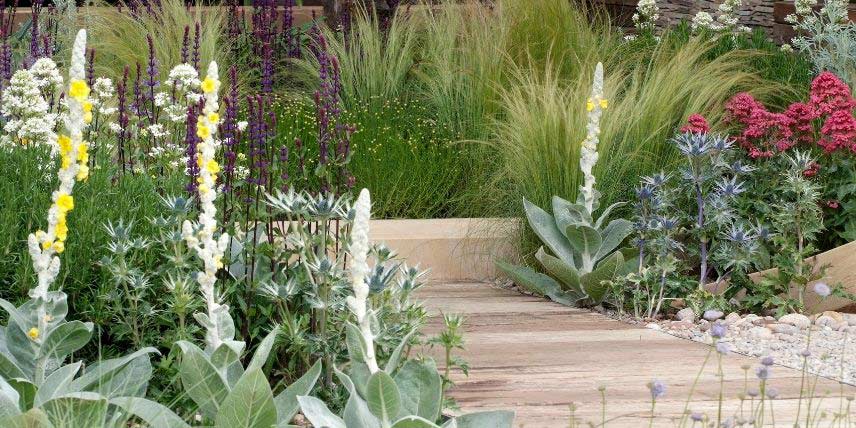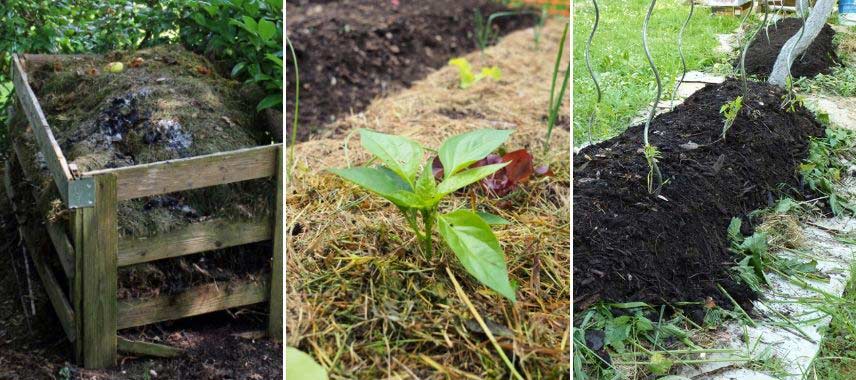
Gardening in dry or free-draining soil: all our tips
To adapt your garden to this type of soil
Contents
Dry or free-draining soils do not retain water. Water soaks into the soil very quickly and soon becomes unavailable to plants. Plants may then suffer from drought. Likewise, these soils are generally poor in mineral nutrients. Plants therefore struggle to find enough nutrients to meet their needs.
Fortunately, some plants have adapted and will actually appreciate that the soil does not retain water (discover for example our selection of plants for a dry garden). Dry soils also have advantages: water drainage prevents plant roots from rotting. They prevent asphyxia relating to root and reduce risk of diseases caused by fungi (fungal diseases). Similarly, in sandy soil, plants tolerate cold and frost better. They are somewhat hardier.
There are solutions to adapt to lack of water and to grow a wide diversity of plants even on very dry, poor soil. You can, for example, enrich the soil by adding organic matter, or install a mulch to retain more moisture… Also discover techniques to survive a drought.
Thus, on dry or free-draining soils, there are two main options: either make the most of the site to grow plants adapted to drought (mountain plants, coastal plants, succulents…); or improve the soil to make it less dry and more fertile, suitable for a majority of plants – And, of course, one technique does not exclude the other: you can easily create a dry, rocky area and a more fertile area within same garden! Discover in this guide techniques for gardening on dry or free-draining soils.
To grow plants adapted to dry soils
You can make the most of the character of your ground to grow drought-tolerant plants, and plants with low mineral requirements. For example, you can grow sedums, lavender, euphorbias, eryngiums, achilleas… In general, grasses are also fairly hardy, as are fleshy plants or succulents, and plants with silver foliage (Stachys byzantina, Helichrysum, Santolina…). You can use this to give your garden an exotic, other-worldly feel (notably with euphorbias, Opuntia, agaves, aloes, phormiums…)
Since your ground is dry, you can also use it to create a rockery, and to grow plants truly suited to free-draining substrates! Arrange an elevated, mineral area where you will place large stones, then plant small rockery plants between them: sedum, eryngium, aubrieta, houseleeks…
For more choices and ideas, discover a selection of 10 perennial plants resistant to drought and 12 bushes for dry or free-draining soil, 11 fruit trees for dry soil, as well as 10 evergreen bushes for dry ground.

Some plants suited to dry ground: Sedum ‘Herbstfreude’, Delosperma cooperi (photo Tanaka Juuyoh), and Achillea ‘Walter Funcke’

An example of a scene you can create on dry ground: Verbascum ‘Polarsommer’, Eryngium oliverianum, Centranthus ruber, Salvia ‘Caradonna’, and Stipa tenuifolia (photo Nathalie Pasquel – MAP – Landscape designer Robert Myers)
Improve soil to make it more fertile and less dry.
How to lay it out?
Ideally start by improving soil. You can increase soil water-retention capacity by adding organic matter: compost, manure, BRF… As they decompose, they will form humus, which helps retain water.
To improve soil, you can also grow green manures, such as alfalfa, phacelia, mustard, vetch, clover… Growing them is particularly useful in the vegetable garden to improve soil structure and enrich it with nitrogen.
In the vegetable garden, you can also, for example, create a square-foot vegetable garden: by raising a planting square, you can fill it with good topsoil enriched with compost. You can also use the self-fertilising raised-beds technique, used in permaculture, or practise lasagne gardening. These techniques will create a small, very rich and fertile area, enabling productive and diverse growing!
On dry ground, it is also useful to plant a hedge, install bushes, to provide a windbreak and thus avoid the drying effect of wind on soil. Similarly, you can create a partially shaded area to limit soil drying by the sun.

Some examples of techniques you can use to garden on dry ground: add compost to enrich soil / use mulch to retain moisture / use lasagne gardening to grow vegetables on a fertile substrate
How to plant?
When possible, prefer autumn planting. This gives plant time to settle and develop its root system while benefiting from cooler, wetter conditions before having to endure summer and drought. If planted in spring, summer will arrive quickly and the plant will be less prepared to withstand hot, dry weather.
If you grow plants on dry ground, be vigilant when planting to give them the best possible start:
- Place the rootball in a basin filled with water. This allows the plant to rehydrate and increases its chances of taking.
- Meanwhile, dig a planting hole. Add well-rotted compost to enrich soil.
- Set your plant in place, then backfill soil around it and firm lightly.
- Water generously.
- Then apply a thick layer of mulch: BRF, dead leaves, wood chips, straw… This is important to keep soil cool for longer.
- You can also create a watering basin around the plant so water stays longer and really soaks in at its base.
How to maintain this type of garden?
Once plants are established, it is important to monitor them to ensure they do not lack water or suffer mineral deficiencies. You can water regularly and generously, or install a drip irrigation system. We also recommend renewing mulch from time to time, adding BRF or dead leaves, for example. Finally, remember to add organic matter, compost, at least once a year to enrich soil.
If you want more information and tips to cope with lack of water, discover Olivier’s article on our blog: “Surviving a drought”
In winter, plants grown in dry soil are less prone to frost damage and more resilient than those in more moisture-retentive soil. They will more easily do without winter protection.
- Subscribe!
- Contents































Comments